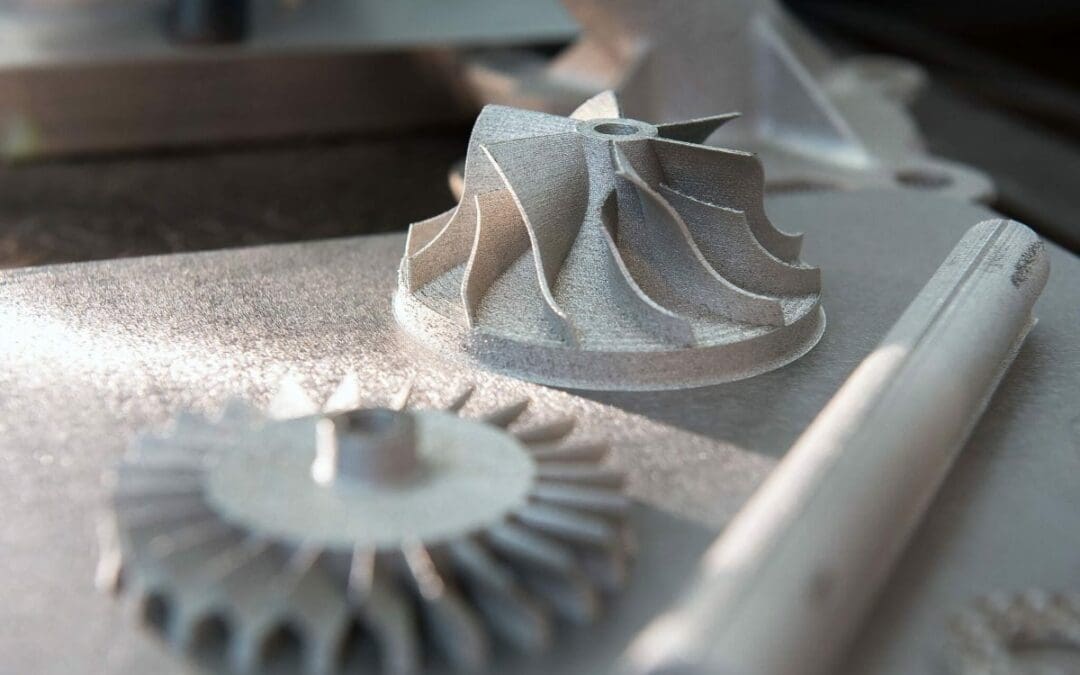3D metal printing spans a diverse array of industries, showcasing its versatility and impact across various sectors. Some key applications of metal additive manufacturing include:
-
Aerospace:
Metal additive manufacturing excels in aerospace applications, enabling the creation of intricate, precise parts with complex geometries. This extends to critical components like turbine blades and fuel nozzles for aircraft engines, as well as structural elements such as brackets and fittings. Directed energy deposition (DED) is also gaining traction in aerospace for the repair and remanufacture of worn or damaged parts, offering time and cost savings compared to traditional methods.
-
Medical and Dental:
Widely adopted in the medical and dental fields, metal additive manufacturing facilitates the production of highly detailed and accurate implants and prosthetics. From spinal implants to hip replacements and dental bridges, the technology’s capability to craft complex geometries and internal structures ensures the creation of personalized medical devices tailored to individual patient needs.
-
Automotive and Transportation:
The automotive and transportation sectors increasingly leverage additive manufacturing to craft detailed and precise components featuring intricate geometries. This spans parts for engines, transmissions, and suspension systems, as well as structural elements like brackets and fittings. The technology’s aptitude for producing lightweight parts contributes to enhanced fuel efficiency and emission reduction.
-
Construction and Architecture:
Metal additive manufacturing finds growing utility in construction and architecture, contributing to the fabrication of intricate architectural features and building components. From decorative elements like sculptures and artwork to structural elements such as brackets and fittings, the technology is adept at creating large-scale architectural elements like building facades and canopies.
-
Consumer Goods:
In the realm of consumer goods, metal additive manufacturing is harnessed to craft highly detailed and precise components. This encompasses jewelry, watches, and fashion accessories, as well as consumer electronics like smartphones and laptops. The technology’s capacity to fashion complex geometries and internal structures enables the production of customized consumer goods tailored to individual preferences.
-
Energy:
Metal additive manufacturing plays a vital role in producing components for the energy industry, including parts for oil and gas applications and wind turbine components.
-
Defense:
Widely embraced in the defense industry, metal additive manufacturing is instrumental in the production of weapons and other defense-related components.
-
Research:
In research and development, metal additive manufacturing is employed to create new materials, prototypes, and conduct testing.
-
Custom Manufacturing:
The technology is utilized for custom manufacturing, producing one-off parts such as replacement components for machinery or custom parts for prototypes.
-
Art:
Metal additive manufacturing extends its reach into the realm of art, contributing to the production of sculptures, jewelry, and other unique pieces.
In conclusion, metal additive manufacturing continues to evolve with advancing technology, demonstrating its wide-ranging applications across diverse industries. This evolution enables the production of increasingly intricate, functional, and customized parts.

